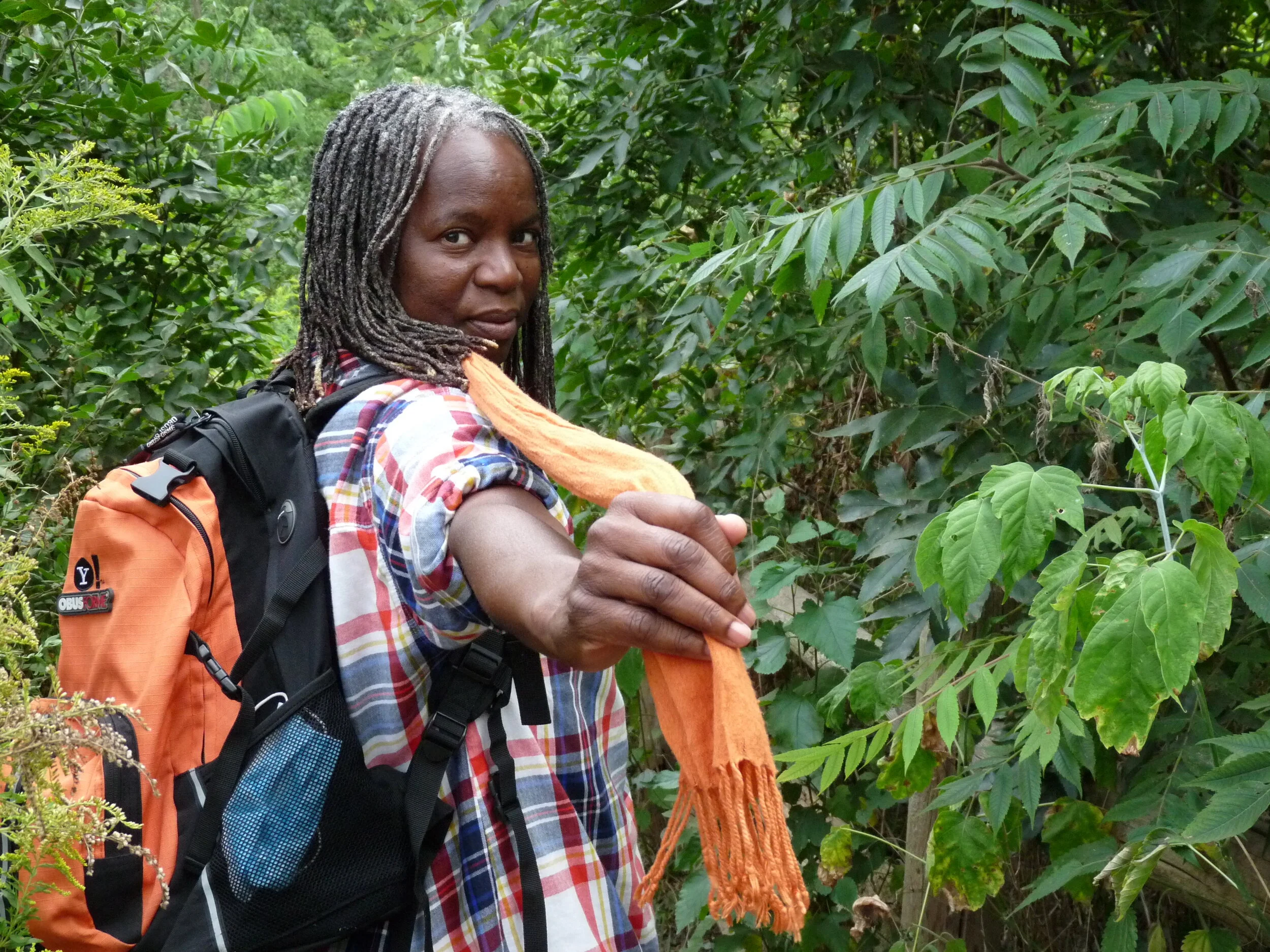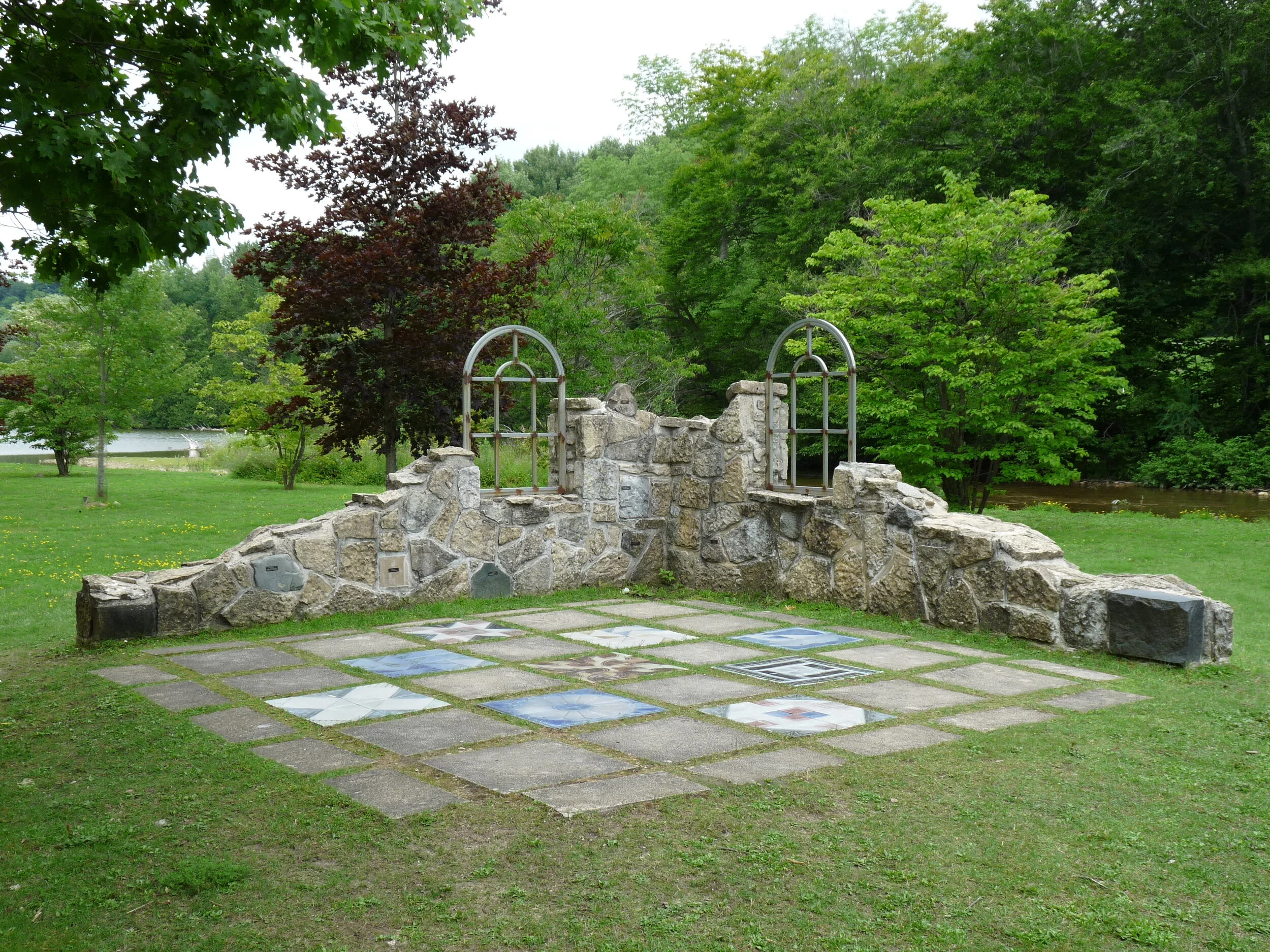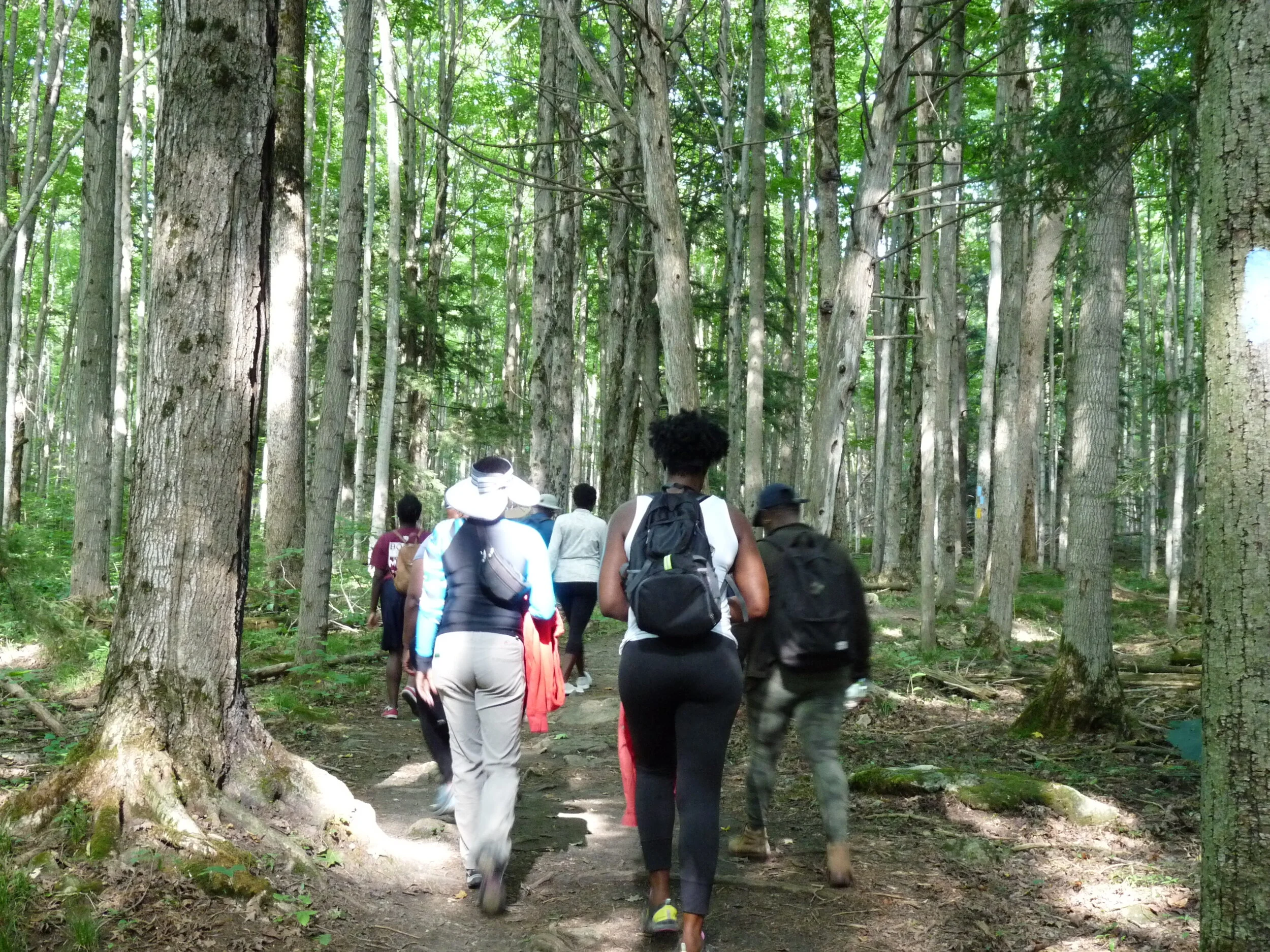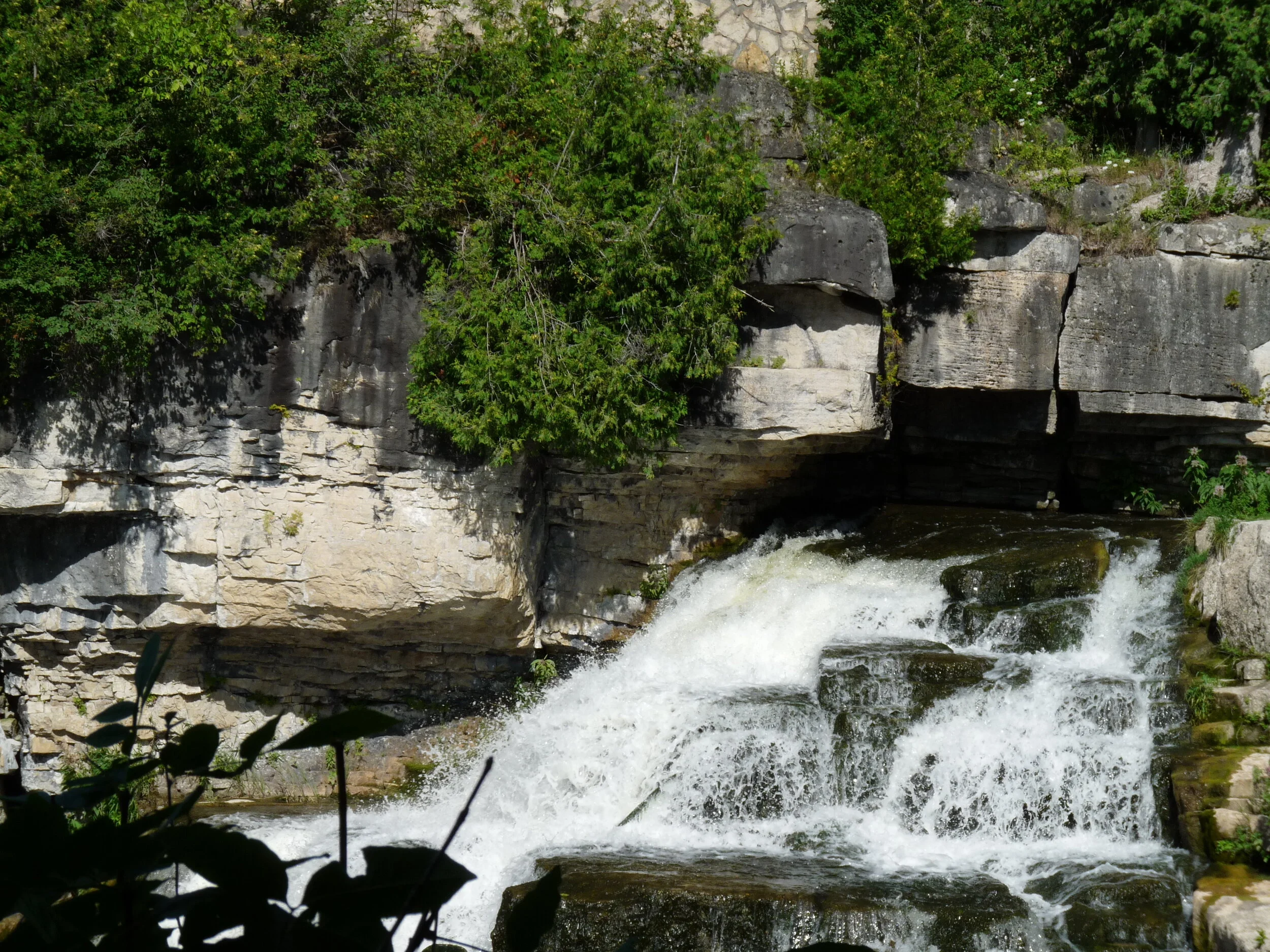Hiking through Black History
By Jacqueline L. Scott, Safina Center Fellow
The author, on a hike. ©Jacqueline L. Scott
Hiking in the woods my spirits soared to the treetops. Here we were, a group of Black people, trekking in the wilderness – for fun. The last two years has seen an explosion in hiking clubs run by Black, and other people of colour, for their own communities. Covid-19 laid the trail, forcing people to rediscover how much they need nature, and that they are part of it.
The community-based hiking clubs were also a response to the uniformity of traditional hiking clubs. These draws their membership from a specific demographic: white, middle-class and older. This membership base has not changed much since hiking clubs started in USA and Canada some 150 years ago. The clubs were formed to counter the supposedly sissifying effects of urbanization on white masculinity. In other words, the fear was that white men were becoming soft, from spending too many hours sitting at a desk, in the city. A walk in the wilderness, along rugged backwoods, and up and down mountains, would keep the men manly. This ideal was popularised by the founders of the conservation movement: John Muir, Henry Thoreau and E.T. Seton.
Traditional hiking clubs enlarged their membership when women were allowed to join in the fun – as long as they were white. The gender gap has closed, but today, the racial barriers in hiking remain as high as Mount Everest.
The Black club hiked the Freedom Trail in Harrison Park, Owen Sound, Ontario. The trail commemorates the long Black history in the area, as Owen Sound was the most northern stop on the Underground Railroad.
Memorial cairn. ©Jacqueline L. Scott
In the park we paused at the memorial cairn, lingering to touch, and read all the information plaques about the Black community. Earlier in the day we visited the British Methodist Episcopal Church. The historic Black church was brick-built, and big enough to hold about 300 people. The annual Emancipation Festival has been held at the church, and with a picnic in the park, since 1862. The event celebrates and memorializes the abolition of slavery in the British Empire, including Canada, on August 1, 1834.
There were some fifteen people in the hiking group. Our chatter on the trail was about the massiveness of the trees, the birds twittering in the breeze, and the spirits being at ease. It was also about the sense of community: of how being together made Black people feel safe, and comfortable, in the deep woods. A love of hiking often leads to an interest in ecology and protecting nature. That was the path that I followed.
Hiking together. ©Jacqueline L. Scott
Part of my Ph.D. research is on the perception of hiking in the Black imagination. It examines, for example, where we hike, who we hike with, and how we find information on hiking. As the trails we trek on are on Indigenous land, it also probes the Black relationship to the land.
Harriet Tubman inspired my research.
She is familiar as a leader in the Underground Railroad, bringing fugitive slaves to freedom in Canada. As a hike leader, I am enthralled by Tubman’s outdoor skills. She led multiple treks, using different routes each time, to avoid bounty hunters and slave-catchers. Her landscape literacy skills – the ability to read the land – was phenomenal. Especially, given that the fugitives usually fled at night, in winter.
Waterfall ©Jacqueline L. Scott
Leaving the cairn we then followed the blazes on the trails to the waterfalls. One was in the Pottawatomi Conservation Area, named after the Indigenous nation whose traditional territory includes the Great Lakes region. Owen Sound is on the site of Newash, an old Indigenous village. Down the road is a reservation of the Saugeen First Nation.
Over the decades, I have led hundreds of hikes for outdoor clubs. Being in nature is where I feel most alive. To paraphrase the reggae singer Jimmy Cliff, a day on the trail blows away the dark clouds that had me blind, and shows the rainbow that I’d been praying for. It makes for a bright, bright, sunshiny day.
Today, more Black and other people of colour are discovering the joys of hiking, by forming their own clubs. They are under-resourced, but grew tired of waiting for better to come from the traditional hiking clubs. The Black clubs are closing the racial adventure gap in hiking, one footstep at a time. And they are doing so on their own terms.
Harriet Tubman trekked in the forests to find freedom. That day we hiked to honour her memory, and to reclaim the woods as a Black space. In our imagination, and by being physically present on the shared land.




